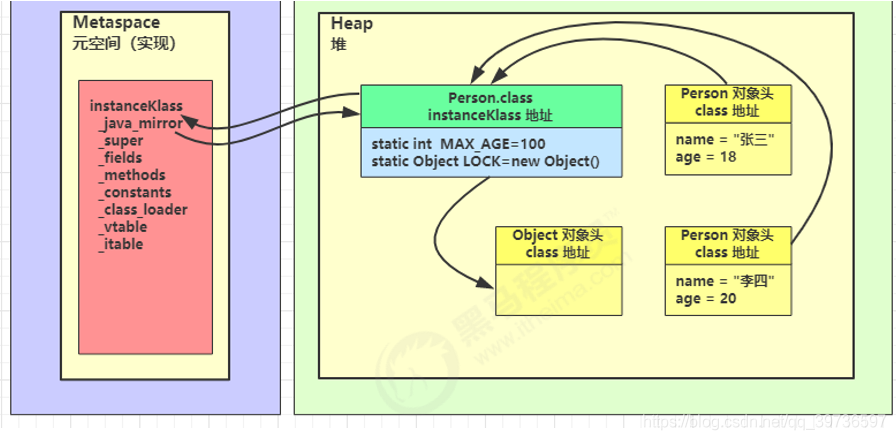为 static 变量分配空间,设置默认值(准备阶段)
话不多说直接上代码:
1 2 3 4 5 6 7 8 9 10 11 12 13 14 15 16 17 18 19 20 21 22 23 24 25 26 27 28 29 | package com.beyond.dhl;class Singleton { private static Singleton instance; // 懒汉式所以不会进行实例化对象 private Singleton() { System.out.println("构造方法:" + Thread.currentThread().getName()); } public static Singleton getInstance() { if (instance == null) { instance = new Singleton(); } return instance; }}public class Test { public static void main(String[] args) { new Thread(() -> Singleton.getInstance(), "线程A").start(); new Thread(() -> Singleton.getInstance(), "线程B").start(); new Thread(() -> Singleton.getInstance(), "线程C").start(); new Thread(() -> Singleton.getInstance(), "线程D").start(); new Thread(() -> Singleton.getInstance(), "线程E").start(); }} |

1 2 3 4 5 6 7 8 9 10 11 12 13 14 15 16 17 18 19 20 21 22 23 24 25 26 27 28 29 30 31 32 33 34 35 36 37 38 39 40 41 42 43 44 45 46 47 48 49 50 51 52 53 54 55 56 57 58 59 60 61 62 63 64 65 66 67 68 69 70 71 72 73 | public class Demo01 { public static void main(String[] args) { int i = 10; //十进制 int i2 = 010; //八进制0 int i3 = 0x10; //十六进制0x int i4 = 0b10; //二进制0b System.out.println(i); System.out.println(i2); System.out.println(i3); System.out.println(i4); }}public class Demo02 { public static void main(String[] args) { float f = 0.1f; double d = 1.0/10; System.out.println(f == d); System.out.println(f); System.out.println(d); System.out.println("========================================"); float d1 = 233333333333333333F; float d2 = d1 + 1; System.out.println(d1 == d2); }}public class MyClass { static int num;}public class Test_MyClass { public static void main(String[] args) { //可直接通过 类名.属性名 进行访问 MyClass.num=10; MyClass m1 = new MyClass(); m1.num=20; System.out.println(m1.num);//num=20 MyClass m2 = new MyClass(); m2.num=30; System.out.println(m2.num);//num=30 System.out.println(m1.num);//num=30 }}package com.soder;public class Soder1 extends Soders{ public Soder1() { p--; System.out.println("子类构造方法\t"+p); } { System.out.println("子类代码块\t"+p); } static { System.out.println("子类静态代码块\t"+p); } public static void m1() { System.out.println("子类静态指令m1\t"+p); } public void m2() { System.out.println("子类指令m2\t"+p); }} |
tips:当类被加载时,类的所有信息(包名,类名,属性,方法等)都会被加载到方法区,而其中的静态属性方法又会被调进静态域,可通过类名直接调用出来




【推荐】国内首个AI IDE,深度理解中文开发场景,立即下载体验Trae
【推荐】凌霞软件回馈社区,携手博客园推出1Panel与Halo联合会员
【推荐】轻量又高性能的 SSH 工具 IShell:AI 加持,快人一步
· 长文讲解 MCP 和案例实战
· Hangfire Redis 实现秒级定时任务,使用 CQRS 实现动态执行代码
· Android编译时动态插入代码原理与实践
· 解锁.NET 9性能优化黑科技:从内存管理到Web性能的最全指南
· 通过一个DEMO理解MCP(模型上下文协议)的生命周期
· 工良出品 | 长文讲解 MCP 和案例实战
· 多年后再做Web开发,AI帮大忙
· 记一次 .NET某旅行社酒店管理系统 卡死分析
· centos停服,迁移centos7.3系统到新搭建的openEuler
· 上周热点回顾(4.14-4.20)